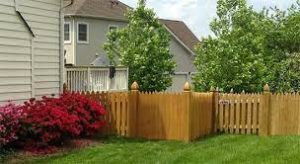A Detailed Process of Fencing
If you’ve just started a fencing project, it may be helpful to have a thorough understanding of A Detailed Process of Fencing. Whether you’re installing a privacy fence or an ornamental one, there are many steps to take in order to complete a project successfully. Listed below are some of the most important steps you should consider. Follow these steps to ensure you end up with a beautiful fence. Click on Fencing services at True Built Fencing in Austin, Texas

First, determine whether any local codes apply. Depending on the scope of your project, you may need a building permit. Check with your local zoning office for information on requirements. For example, fences may not be allowed in public areas, so be sure to check if the structure is allowed. Also, check whether the fence is within the property line. If it is, make sure it has a proper setback. The setback is the distance from the property line to the fence. The fence should be set back two to eight inches from the property line. You’ll probably need a building permit.
Fencing costs vary widely depending on the type of fence you choose. Consider the type of livestock you’re fencing, the number of border crops, and the dangers from predators. Consider the cost of each type of fence before deciding on the style. Cost index figures are a good way to gauge relative costs, with a fence that costs twenty-five percent more than one with a cost index figure of twelve costing double as much per foot. You should also know the life expectancy of the fence, which is based on the combination of post and wire.
Once your fence has been installed, you should visit your local building department to apply for a permit. You will need to fill out the permit application, but you may also need to fill out additional information such as the license number of the fencing contractor. In Oregon, contractors must have a license from the Oregon Construction Contractors Board, so be sure to check for the necessary documents. Plumbing and electrical contractors also have extra licensing requirements.
Before you get started, determine how much equipment you need. Fence building equipment includes fence stretchers, post drivers, saws, drills, and air compressors. You’ll also need office space for your equipment and files. Consider building a homestead if you have the space. A fence business can be profitable. A Detailed Process of Fencing
When deciding on a type of fencing system, you should consider the type of wire you want to use. Most types of fencing use cable wire. This type of wire is more expensive and is generally used for confinement areas, such as holding pens, feed lots, and corrals. Cable wire fences are also known for being prone to breakage due to winter cold, which means you’ll need to brace your wire firmly.
Modern fencing rules were created after the nineteenth century, and have three disciplines: epee, foil, and sabre. The rules are very similar to those of classical fencing, and each weapon has its own distinct set of rules. Despite the differences, they are all related sports. It’s important to follow the rules of fencing if you plan to participate in competitive competitions. For those new to the sport, A Detailed Process of Fencing can be a great reference.